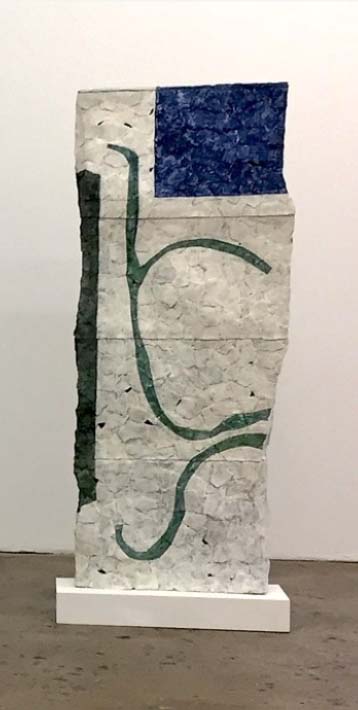- Apply
- Visit
- Request Info
- Give
Published on August 07, 2023
Linda Casbon
Conceptual artists are mystics rather than rationalists. They leap to conclusions that logic cannot reach.
Sol LeWitt, “Sentences on Conceptual Art” in Art-Language 1, #1 (May 1969).
I have always respected and admired the work of Sol LeWitt; until now I haven’t thought of him as a direct influence. My work is hand-made and intuitive, and my ideas are only fully realized through the process of making. LeWitt’s work is planned before execution, seemingly mathematical, and often executed by others. In doing research, I’ve come to view LeWitt as a pioneer who changed the way we look at art and laid the groundwork for my own process.
Appearance vs. Essence
Early in my career, I became enamored with out-of-focus images. I wanted to create objects that captured a sense of unidentifiable familiarity; and work that inferred rather than dictated meaning. I also sought to capture the power of artifacts - objects devoid of their intended purpose, but still possessing significance. I began thinking of my work as a language of metaphoric associations. Objects are placed together suggesting a sentence, a poem, and a kind of narrative with its own internal logic. This is not unlike LeWitt’s design and use of rules and systems, to generate open ended and ambiguous works with the end goal of creating unique phenomenological experiences.
Painting vs Form
Although LeWitt’s mature work rejected categorizing work as “painting” or “sculpture”, his early works were paintings; these evolved as he expanded the picture plane and explored interior space, and then realized he was interested in the structure rather than the “skin” (and eventually the “skin” was wedded to architecture). As someone who works in clay, this evolution speaks to me. Ceramic work by its nature is a meet-up of form and surface, and interior and exterior. In my work ceramic forms are used as a sculptural canvas to draw on, creating interplay between painted shapes and actual shapes. The differences between two and three dimensions is an important aspect of the work. Three-dimensional objects are concrete and real, whereas the world of the painted image is illusory. The shadow of a tree moves and changes, it is ephemeral, but the tree that casts the shadow is physically present and real. I view the juxtaposition of these elements as the here and now (real) meeting up with the infinite and intangible.
Physical Engagement/Architecture
In a round-about way, another parallel between my work and that of LeWitt’s is an interest in architecture.
In his early years, LeWitt worked for IM Pei, and later fashioned his practice akin to that of an architect; he created the ideas and drawings, and others executed the work. My connection to architecture was as an undergraduate studying Environmental Design and learning about the sociology of architecture. This encounter in thinking about form and space in relation to one’s surroundings, made an impact on my work, which is often large scale (in terms of ceramics) and requires the physical engagement of the viewer. For example, the drawing on Green Line, part of the Painted Shapes series, wraps around the piece and can only be seen by moving around the form. The piece cannot be experienced all-at-once. Physical engagement is also an important aspect of LeWitt’s work, as a way of creating a transformative experience, and his Wall Drawings blur the boundaries between art and architecture.


